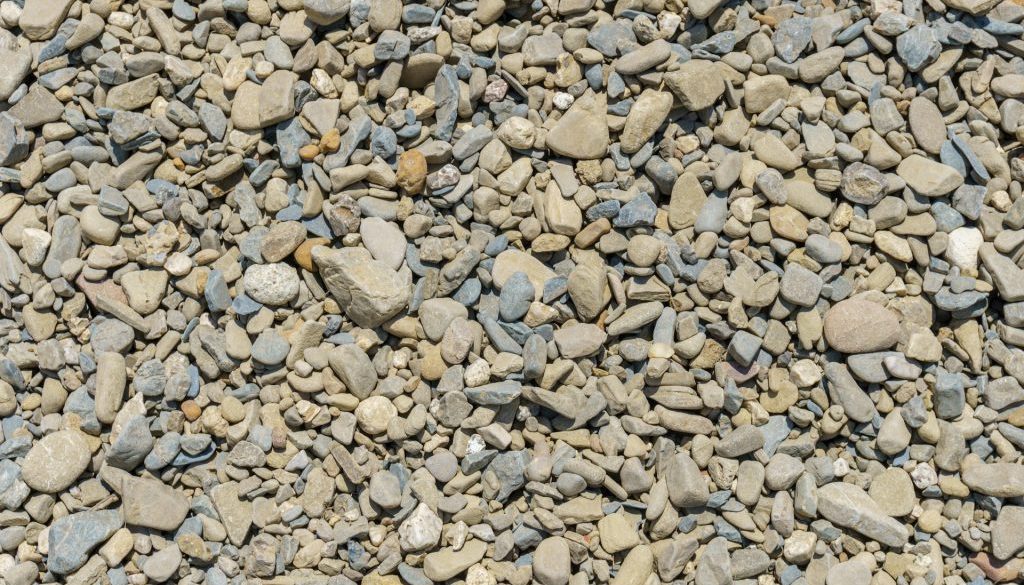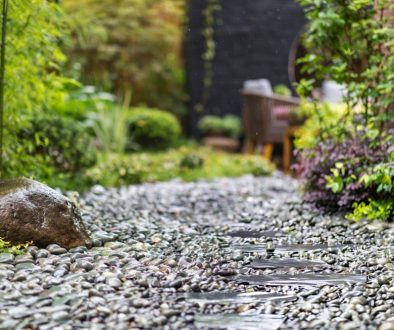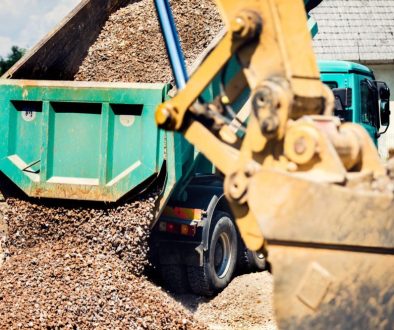Some garden and driveway surfaces just do not hold up very well when it rains a lot. Mud builds up, water stands around, and things start feeling soggy or slippery underfoot. We have seen this in lots of outdoor spaces, especially during the wetter months in places like Cheshire. Autumn and winter often bring days of heavy rainfall, which means choosing the right ground cover matters more than ever.
That is where bulk 20mm gravel can make a difference. It gives water somewhere to go and keeps the ground firmer under pressure. This kind of gravel has the size and shape to let rain drain through, which helps keep walkways and driveways usable through the wetter months. Let us take a look at why that is and how to make the most of it.
Why Drainage Matters in Wet Weather
When rain keeps falling without much break, surfaces that do not drain well start to struggle. Water starts to pool, walkways get slick, and driveways turn messy. In soaked gardens, areas with poor drainage get squishy fast, and it only takes a few days before muddy puddles form.
We have found that during autumn and into November, the steady rain in the UK makes it tough for ground to stay dry unless it has a bit of help. The soil gets full and water needs somewhere else to go. Without a base that allows drainage, patches around sheds or garages can collect standing water, and paths can wear out faster from foot traffic and shifting ground.
Good drainage helps in a few key ways:
• It keeps surfaces safer and easier to walk on
• It prevents puddles around doorways and structures
• It can stop damage to paths, gravel areas, and plants nearby
Choosing a gravel with the right shape and spacing helps water move away instead of sitting on top where it can cause issues.
What Makes 20mm Gravel a Good Fit
Gravel comes in lots of sizes, but 20mm is often the one that holds up best in wet spots. The pieces are large enough to leave gaps between them, which lets water move through and down into the base below. That is much better than smaller gravel or compacted soil where water ends up sitting on top.
There is something about the weight of bulk 20mm gravel that works well outdoors too. It does not shift as easily in storms or wash away with heavy rainfall. Whether it is going into a winding path or a parking spot, it tends to stay in place without a lot of movement.
We see a few clear reasons why we use 20mm gravel for wet zones:
• The size lets water drain quickly, even after long downpours
• It does not get compacted as much as smaller gravel, keeping it more open
• It is heavy enough to resist getting washed out during storms
That balance makes it a good match for spaces that need to stay put, even when the weather does not cooperate. According to the aggregates page on our website, 20mm gravel is commonly picked for driveways and groundworks where good drainage is important, especially in high rainfall areas.
Where to Use It Around the Property
We have used gravel in lots of places, but bulk 20mm gravel really earns its keep in areas where water hangs around or ground gets soft underfoot. With rain coming more often in the colder months, outdoor areas in Cheshire need extra support to stay usable.
A few good areas to use this type of gravel include:
• Garden paths that need to feel firm when walking during wet weather
• Driveways where vehicles could otherwise sink into soft ground when saturated
• Around the base of sheds or greenhouses to stop puddles forming near the edges
• Under roof overhangs or near patios where rain often collects or runs off in sheets
Water tends to flow to low spots, and gravel is a simple way to deal with that. Whether it is used for access, decoration, or utility, it helps keep things dry and cleaner through the worst of the weather. Our site highlights that our gravel is sourced locally and is ideal for a wide range of uses on both domestic and commercial projects.
If you walk along a garden path or across a driveway done with too-small or compacted gravel, you might find it slips underfoot or turns muddy after a downpour. The difference with 20mm gravel is noticeable, offering a surer step during wet spells. This is especially handy for families with children or anyone who needs steady footing regardless of the weather. Even pets tend to track in less mud when they pass over well-draining gravel, keeping indoor spaces a bit tidier during autumn.
What to Pair with Bulk 20mm Gravel for Best Results
We have found that gravel works even better when it is set up for the long run. That means thinking about what goes underneath it and what holds it in place. Gravel that is just poured on soft soil might work for a short time, but will not always hold up under heavy rain or loads.
Here is what we recommend using under and around the gravel:
1. MOT Type 1 or other solid sub-base below gives the structure better firmness
2. A membrane helps keep weeds out and stops the gravel mixing with the soil
3. Strong edging keeps the gravel from spreading out or getting into flower beds
4. The depth should be right too, usually around 50mm to 75mm for footpaths, depending on use
We often remind people not to skip these parts, especially in wet locations. Without that firm support underneath, even the best gravel will not work as well as it should.
Even after installation, it’s useful to double-check edges after the first few heavy rains. Sometimes gravel settles a little, so topping up areas that thin out ensures you keep the coverage and drainage consistent. Quick checks after a storm can also spot any pooling early, letting you sort it before it becomes a problem later in the season.
Long-Term Gains for Wet Weather Projects
Choosing materials that drain well is one of those things that might not feel important until the next storm rolls through. But it makes a big difference in how long outdoor work lasts and how much time you spend fixing issues every year.
Using bulk 20mm gravel in key spots means we do not have to clear standing water or mop up mess every time the weather turns bad. Once it is in, and the setup underneath is right, the need for regular raking or shifting is low. It is low maintenance and handles the kind of weather common across the autumn and winter months in the UK.
We have seen that when paths and driveways are planned with drainage in mind, they often hold up better through the seasons. The surface stays neater, and the spaces stay easier to use without constant upkeep. It only takes one or two rainy days to remind us that poor drainage creates big problems fast.
Thinking about water early helps avoid that. Choosing a solid gravel like 20mm means outdoor areas keep their shape, even after weeks of drizzle or storms. In the long run, that helps keep gardens and driveways in better shape all season.
Making a habit of saving some gravel at the start for later repairs can help if you notice thin patches midway through the season. That way, it’s easy to refresh any worn spots quickly without needing to reorder or delay other projects on site. Even when the rain keeps coming, this keeps your surfaces looking tidy and holding strong.
Planning ahead for the wetter months in Cheshire can make all the difference for your outdoor spaces. The right preparation and materials keep areas tidy and usable, even during heavy rain. Where water tends to collect, we recommend starting with a strong base and using bulk 20mm gravel for better drainage and stability. At Enviro Skip Hire, we have experience with all types of ground conditions and know which solutions hold up best when the weather turns soggy. Give us a call and we will help you plan the best approach for your space.




